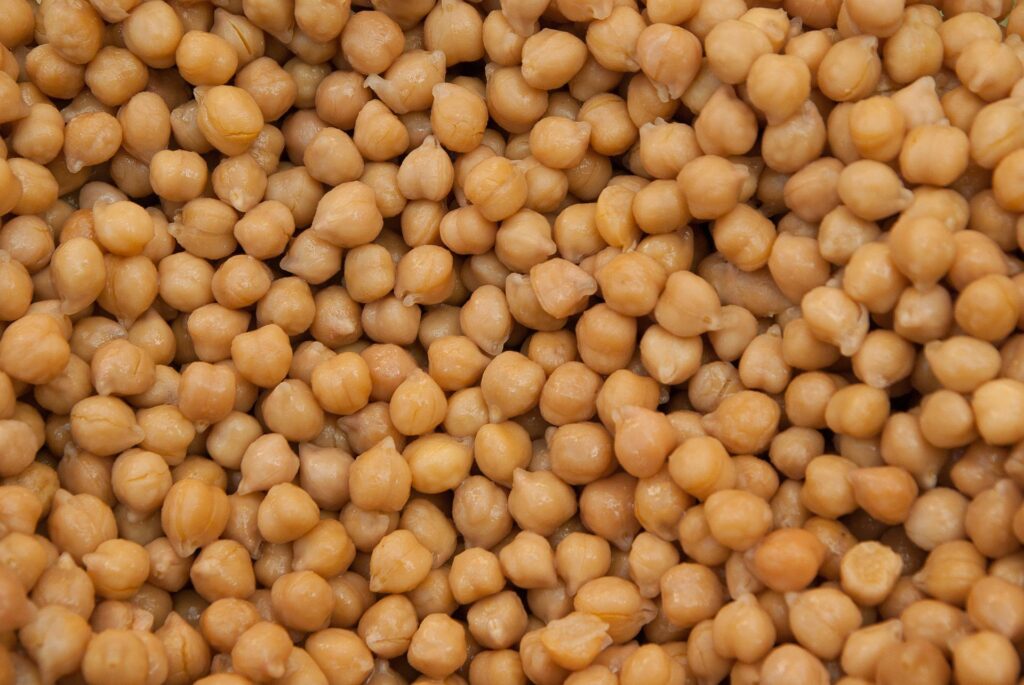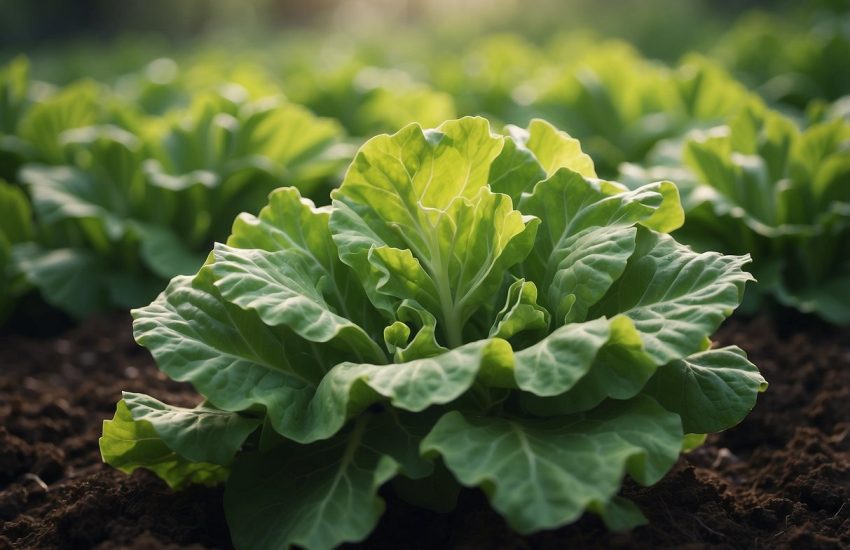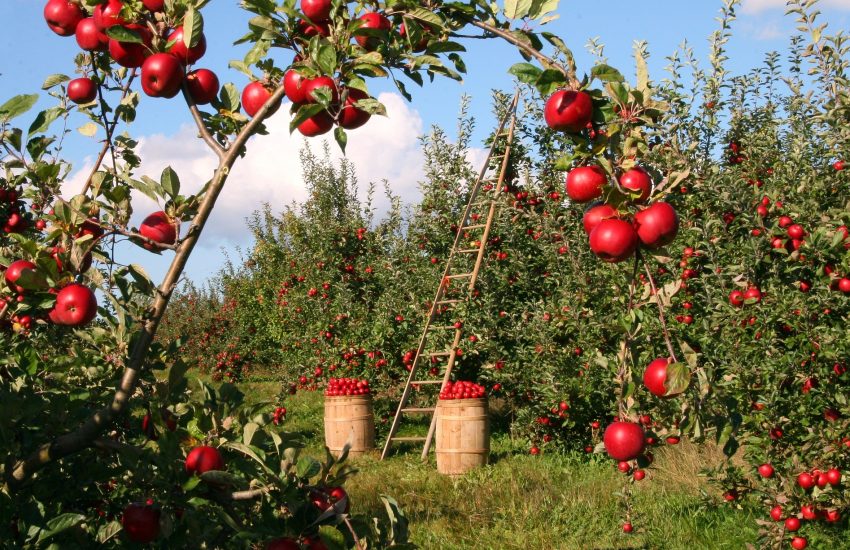Chickpea Farming: How to Plant, and Grow
The process of chickpea farming is quite simple and does not require many modernized or sophisticated means of practice. Cicer arietinum, commonly known as chickpea is an annual legume belonging to the family Fabaceae. The subfamily of chickpeas is Faboidae. The famous chickpea is widely known as gram, chana, garbanzo, garbanzo bean, or Egyptian pea. The chickpea, a legume, is a rabi crop, which means that this crop is sown between October to November.
The chickpea can be used both as food for humans as well as fodder for cattle. Chickpeas can be consumed in various forms. It could be consumed in its whole form or its split form as well as in any form of cooking such as boiled, fried, salted, etc. With a high protein, chickpea stands very healthy and has several health benefits and medicinal purposes. Chickpea is also a good source of various nutrients such as calcium, niacin, and iron. Chickpea is also very popular as it is known for their medical benefit of purifying blood. Thus, chickpea holds a status of a vital source of food and stands very popular among people.

Description of the plant
The chickpea, a legume, is a bushy plant in nature. This bushy plant could grow up to 18 inches in length. The plant could reach a height of 8 inches up to 20 inches. The leaves of the chickpea are small in size and appear feathery and grow on either side of the stem. This cool season plant requires a temperature of around 70-to-80-degree Celsius Chickpea also has various varieties and each variety slightly differs from one and another.
They could either be of a darker shade such as black or green or specked. They are also found in lighter shades where the chickpea is usually white or cream-colored with a larger coat than that of the dark-colored variety. The light shades of chickpeas also have a smoother coat in comparison to the dark-colored ones.
Land requirements for chickpea farming
Chickpea has certain requirements that have to be fulfilled to ensure successful farming. These criteria have to be paid attention to and cannot be ignored. In the case of chickpea farming done in colder areas, the area for farming must be selected in such a way that there is sunlight for an average of 8 hours. This is very vital for the survival of chickpeas.
Similarly, if farming is done in hotter areas, it has to be ensured that the plants receive some shade in the afternoon and are not exposed to the direct rays of the hot sun. The plant, like most plants, requires soil that is intact and moisture filled, yet at the same time, well-drained. To ensure this, the soil is usually made ready with the help of tractors. The soil is being plowed to prevent weed, as weed poses a big problem in the case of chickpea farming. Thus, these land requirements have to be fulfilled to ensure the successful farming of chickpeas.
See Also: Blackberry Farming
Cultivation of chickpea
The cultivation of chickpeas involves various factors that are to be monitored and kept in mind. Chickpea, being a rabi crop, has to be sown around October. Thus, sowing this rabi crop earlier or later will not yield the expected result and will result in poor efficiency. Cultivating earlier than October could lead to excessive growth of leaves and poor development of pods and seeds, i.e., chickpeas.
Another concern that arises due to early sowing is wilting. Rabi crops tend to wilt when sowed earlier due to the high temperature. This holds even in the case of rabi crops. Thus, extra efforts must be taken to ensure that the plant is cultivated at the right time. The method of sowing may be either by using machines or by hand.
Drills or plows could be used to sow depending on the scale of land in which the farming is carried in the seed has to be sown in such a way that it is at least 8cm to 10cm deep in the ground. The hole dug for sowing the seed could be treated with bavistin to ensure better productivity of the plant. These factors and rules must be borne in mind while cultivating chickpeas.
Fertilizers used in chickpea farming
Chickpea is a type of crop that requires attention and thus there is a need for fertilizers and manure. Applying certain fertilizers is necessary for the development of the plant. Chickpea being a pod-bearing plant is a leguminous plant. Thus, it demands the need for nitrogen. Sometimes, due to a lack of organic material and the necessary bacteria needed for nitrogen fixation, there arises a need to add nitrogen artificially.
This could be done with the help of fertilizers. Chickpea requires 75% of nitrogen, thus, 20 to 25 kg per hectare of nitrogen is required to be added. This could be done after 3 to 4 weeks of sowing to ensure optimum productivity. To further ensure efficient chickpea farming, phosphorus could also be added naturally. Phosphorus could also ensure better development and growth of chickpeas. Sometimes, the soil may lack both the important nutrients, that is, nitrogen and chickpea.
In such cases, it is necessary to add di-ammonium phosphate. The diammonium phosphate should be added uniformly throughout the farm at 100 kg per hectare. This could ensure that the plants get their required nutrients and are given the best conditions to develop. The fertilizers could be proof of better use when they are applied by drilling holes. The fertilizers applied in these holes must be of a depth of 10 cm.
Chickpea demands a soil condition that is well moisturized. Thus, irrigation before the process of cultivation is vital, especially if the soil is dry. Chickpea needs pre-irrigation only to maintain the uniformity of the moisture of the soil and not for wet soil. This could ensure successful germination and growth of the plant. Chickpeas could develop more efficiently if irrigation is done in the pod-bearing stage too. But this must be carried on only if the area has no natural rainfall and faces dryness. Chickpea does not thrive in the case of standing water and excess water. Thus, utter care has to be taken to ensure that the soil is well-drained yet filled with uniform moisture.
Planting of the seeds
Planting of the seeds is also an important stage in the case of chickpea farming and has to be done with proper care to avail good reaps. The hoe has to be an average of 2.5 inches deep. Each seed must be buried in a separate hole to get better chances of survival. There must be a gap of around 3 inches between each seed so that once the plant grows there is no overcrowding and the plants have sufficient places to grow and develop individually. These factors have to be considered while planting the chickpeas.
Growth of the plant
The growth of chickpeas does not take a lot of time. It takes considerably a short span to being germinating. The chickpea should start germinating around 10 to 14 days after planting them. Watering is an essential part of the growing stage of chickpeas. The plant must be regularly watered for its growth. 1 inch of water per week is required in the case of the cooler area while 2 inches of water is required in the case of warmer areas.
These criteria where water is continually provided at the right amount serve as the basis of chickpea farming. The plant, being bushy, requires trimming at regular intervals. This, however, does not require much work and poses as a simple task. The plant could be trimmed with normal scissors when they are around 2 to 3 inches. Plants ought to be trimmed and their height must not reach beyond 6 inches. This is done in such a way that the roots of the plans are not disturbed. These aspects of care must be shown in the case of chickpea farming to ensure productivity at the most optimum level possible.
Weed
Weed poses a huge problem in chickpea farming, just as it does in other cases of farming. Thus, there is an absolute necessity to control the weeds and check them. Weeding can be done with hands at various levels depending on the level of infestation. A simple gardening tool, a hoe, could be used, to remove the weeds. Weeds infer with the development of plants and therefore must be eradicated. In case of excessive weeds, herbicides may be used to kill them.
Basalin of around 1kg in around approximately 1000 liters of water per hectare could be used on the soil before the process of cultivation begins. This acts as an effective herbicide and could help in eliminating weeds. Thus, hand weeding or herbicides could be used depending on the rate of growth of the weeds. However, it is of utmost importance to eradicate the weed to ensure the growth of the chickpeas.
Pests and diseases in chickpea farming
One of the main pests faced by chickpeas is the issue of Cutworms. This poses a huge risk to chickpea farming and must be eliminated as soon as possible. Lindane with around 6% granules could be used to eradicate the issue of cutworms. Another major issue faced by Chickpea farming is Pod Borer. This could be prevented by the application of the spray Endosulfan 35 EC.
These pests are the most problematic in the case of chickpea farming and they have to be eliminated at the earliest. There are a few diseases that pose a great threat to chickpea farming. Wilt is the biggest concern in the case of chickpea farming and has to be paid enough attention to. This is mainly caused due to fungus. This could be treated by using a mixture of Benlate and Thiram in a ratio of 1:1. Grey mold is also a primary concern in chickpea farming.
The use of Bavistin will control this disease. Rust is a major source of risk in certain varieties of chickpeas. This could be treated by spraying the infected crop with 0.2% Mancozeb 75 WP at regular intervals, of usually 10 days. These are the major diseases faced by chickpeas and they could be easily treated with the use of such fertilizers.
Harvest and yield of chickpea farming
Most crops usually indicate the time of harvest by change of color. Chickpea is similar in this way. The crop will indicate that it is time for harvest when its leaves turn reddish brown and start shedding. This indicates the time for harvest wherein hands or a sickle could be used to pluck the plants. Once the crops are plucked, they should be left to dry in the sun for 1 week or so.
Later, once the crops are dried, threshing could be carried. Threshing is done to separate the plants and the seeds. This could be done by beating the plants with sticks. The yield of the crop depends on the variety of the plant. However, the average yield is around 25 quintals. The yield can be improved by better means of farming and by providing the required attention to the plant.
Conclusion
With certain care and attention, chickpea farming could yield great benefits and yield. Chickpea farming is a profitable business and with knowledge about the method of chickpea farming, great economic gains could be achieved. The protein-filled, nutritious chickpea is in great demand, and thus chickpea farming is increasing in popularity.


